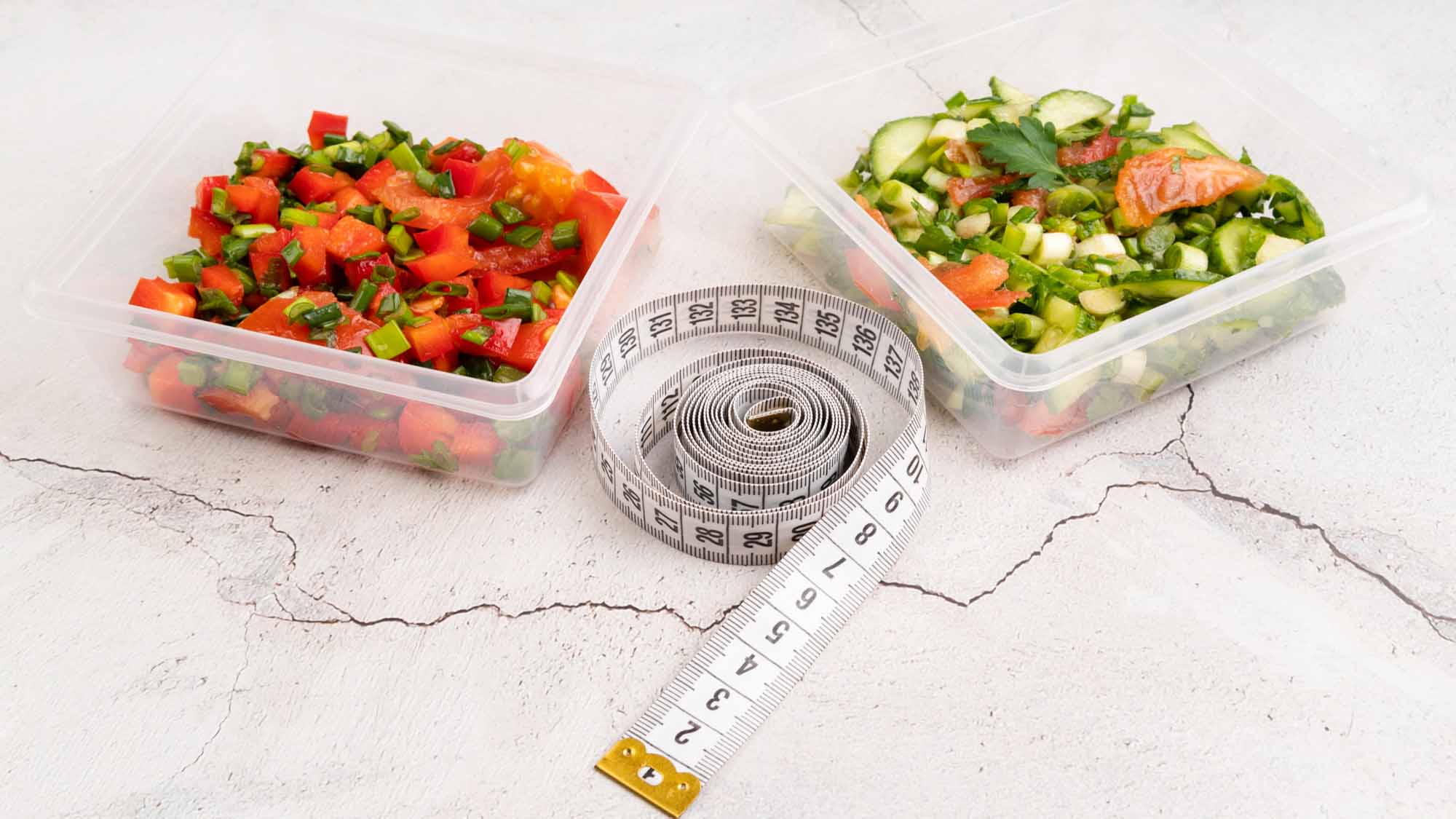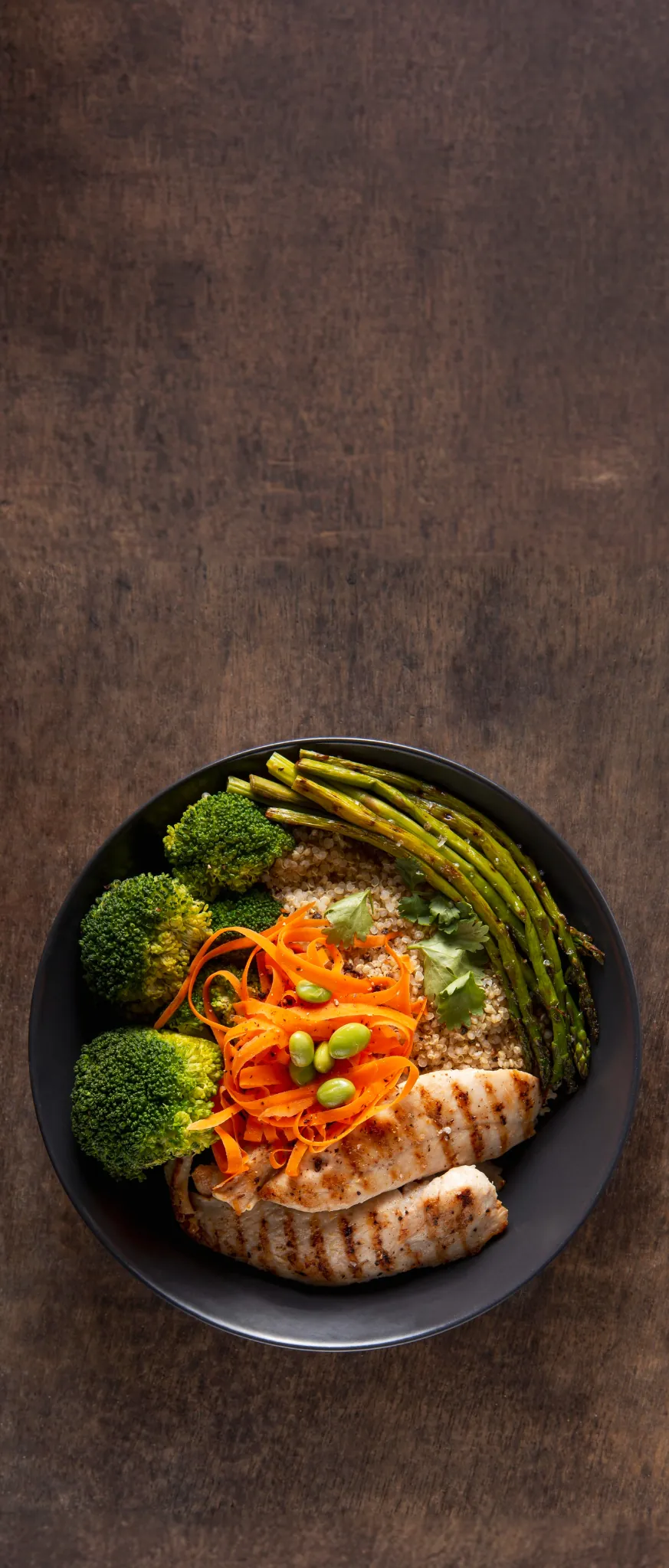10 Meal Portion Control Tips for Delicious and Healthy Eating
02 Nov 2023

Eating healthier is not as simple as throwing away all your junk food. It takes some planning regarding both the type of food you eat and how much you eat at one time.
Proper meal portion control is often the key to healthy eating, helping you macro-balance your diet while giving you enough energy for your day. And as these benefits suggest, there's more involved in portion management than just eating less of the same foods. Read below for a few tips on implementing portion control into your meal planning.
What is the difference between a portion and a serving?
The terms "portion" and "serving size" are somewhat related, so it's easy to conflate them. A portion is the amount of food you eat at one time, whether a meal you made yourself or a fresh delivery service meal. In contrast, a serving size is a standard, measured amount of food. In prepared and boxed foods, the serving size is detailed on the package. For fresh foods like fruits, vegetables, and meats, these have general, rough serving size and nutrition information associated with those serving sizes.
What's an ideal portion size?
Portion size may or may not match the servings listed on food labels, depending on what fits into your diet. Recommended daily calories can vary from person to person depending on their:
- Age
- Current weight and height
- Whether you were assigned male or female at birth
- Activity levels
- Metabolism
As a result, careful consideration is required to accurately calculate your ideal portions. Online portion calculators can help you track the size of your meals and the amount of macronutrients in your food. But overall, it's a good idea to speak with a healthcare professional before making any drastic changes to your diet.
10 tips for meal portion control
The tips below can help ease you into developing your portion management routine - or help you improve what you already use.
1. Shrink your dishes
Successful portion control is often a matter of managing subconscious cues rather than willpower. For example, using bigger plates or bowls for your meals can make the amount of food on them seem smaller. As a result, you might unconsciously serve yourself a bigger portion because the initial one doesn't seem like it'd be enough to satisfy you. Using smaller dishes can counter this tendency. It can give the illusion that your portions are bigger than they actually are, helping you subconsciously feel full with smaller portions.
2. Use your hands as a "cheat sheet"
A person's hands are usually proportional to their body size, which itself greatly influences their daily calorie requirements. Bigger people will usually have bigger hands and, consequently, bigger stomachs. This means you can use your hands to roughly gauge your ideal meal portion size.
In practice, this often plays out like (using sex assigned at birth):
- Men can eat two palm-sized portions of high-protein foods, while women can eat one.
- Men can eat two fist-sized portions of vegetables, while women can eat one.
- Women can eat a single, thumb-sized portion of high-fat food, while men can eat two.
While this method isn't exact, it's easy to reference in a pinch.
3. Drink a glass of water with your meal
Drinking a glass of water about 30 minutes before a meal is a great natural way to control your portions. This isn't just dieting advice - it's science.
The same part of your brain interprets bodily signals for hunger and thirst, so if you're feeling hungry, you might just be thirsty. Drinking water can help combat sudden cravings and reduce your appetite so you naturally eat smaller meals.
4. Get a half-portion when eating out
Most restaurants serve huge portions of food, with serving sizes much larger than what you may serve yourself at home. Portion control is thus challenging when you're eating out, but not impossible. For starters, you can order half-portioned meals or gauge the right portion size with your hand and take the rest home.
Alternatively, you can opt to order only an appetizer instead of something off the main menu. The best advice of all, though, might be to avoid restaurants entirely. The restaurant won't always let you order a half-portion or even just an appetizer. Other ways of getting food may be better for your portion control.
5. Be wary of restaurant meal deals
Something else to watch out for if you're eating out are meal deals or combos. Walking into a restaurant and ordering a portioned meal is possible, but the restaurant wants you to walk away with more. That's why many restaurant franchises offer buy-one-get-one-free deals or a discounted soda or snack when you buy a sandwich. Saving money can be enticing in the moment, but an extra bag of chips can needlessly inflate your portion size.
Make sure you go into a restaurant with a firm idea of what you want to buy and at what size. This can help you avoid any subconscious cues in the establishment to make you purchase more food than you meant to.
6. Make the table a screen-free zone
Dieticians recommend taking smaller bites of your meals and chewing around five or six times before swallowing. This can give your brain more time to catch up to your body and process that you're getting full. This slowdown isn't just good for your brain, though: It gives you the opportunity to truly savor your food.
To savor your food, though, involves minimizing distractions when you eat. Watching videos or scrolling Facebook might prevent you from noticing how full you're getting until you've already cleared your plate. Mindful eating can keep you aware of your food and lead to you eating less than usual. There's also an added benefit: Being more present during meals can help you enjoy the taste more.
7. Take note of the true size of a serving
The serving size printed on nutrition labels might be the most tried and true source for determining your ideal portion size. Even if the serving sizes don't exactly fit your diet - some are pretty small - they give you a starting point. You can double a serving size and simply multiply all the nutrient amounts by two to see the impact on your health goals. It can be helpful to measure your meals using the serving size for a short time, then alter it as needed.
8. Put your food in a bowl or on a plate
It's easy to lose track of how much food you're eating when you get it straight from the bag. Jumbo-sized packaging for potato chips or candies can encourage overeating since this packaging can make it seem like there's less food than there actually is. Pouring snacks into a smaller, portioned container can help ensure that whatever you eat doesn't interfere with your daily nutritional goals.
This method of portion management can also work for full meals. Divide your food into separate containers according to the amount you want to eat at one time.
9. Keep a food diary
Many people eat more within a day than they might think but are unaware of it because they get used to that amount of food. Writing down all your food and drink intake throughout the day in a journal can help to increase your awareness. With this information, you can readily adjust your meal portions to better fit your daily requirements. Additionally, a food diary provides a visual measure of your progress in changing how you eat, which can help motivate you to continue your efforts.
10. Yes - eat snacks between meals
This may seem counterintuitive, but eating healthy snacks between meals can help you better manage portion size. If you get hungry from breakfast to lunch or lunch to dinner but don't eat anything, you might eat a larger next meal. Even a small increase in your portion size can disrupt your macro-balanced diet and push your health goals further out of reach. A piece of fruit or a spoonful of peanut butter can be just the thing to take the edge off your hunger between meals.
Order a perfectly sized meal with Meal Village
Proportioning food is often worth the effort needed to do it properly, but maybe you don't have the time to measure everything you eat. This makes the option to have fully ready-to-go meals delivered directly to your door pretty appealing. That's exactly what Meal Village offers.
With Meal Village, you get heat-and-eat, pre-portioned meals - you can only eat the amount of food in the container. Plus, our chefs make each meal fresh the day you order it with only the best locally-sourced ingredients. Order from Meal Village today to achieve your ideal portion size - no cooking, chopping, or cleaning required.



